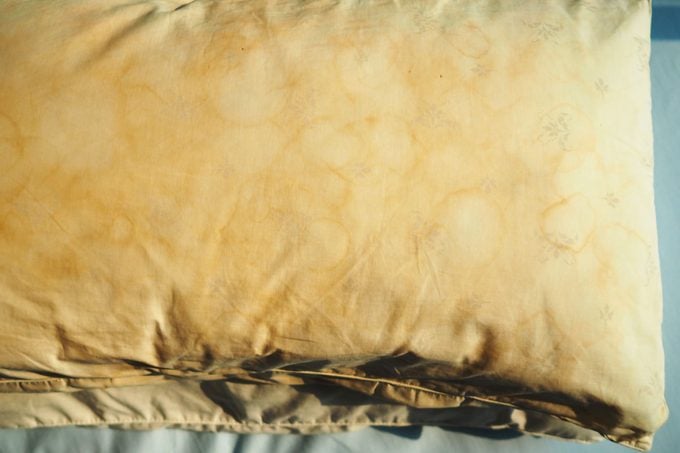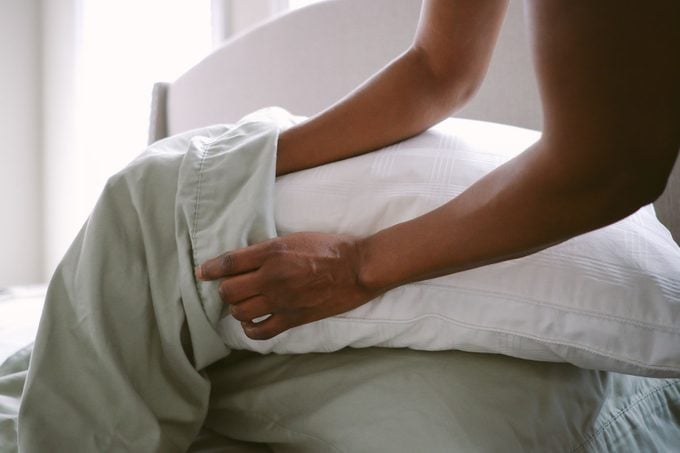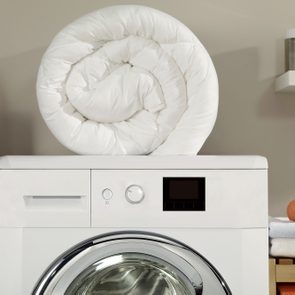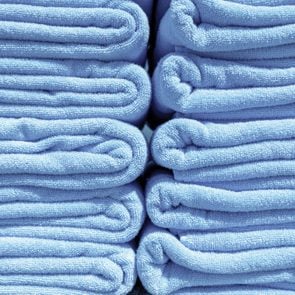Here’s What Happens if You Don’t Wash Your Pillowcase—and It’s Disgusting
Updated: Jul. 02, 2024

Your sheets have a dirty little secret. Here's just how nasty those unwashed pillowcases can get.
Be honest, how often do you wash your sheets? Sure, experts say that it’s recommended to wash your bedding at least once every two weeks. But are you actually doing it that often? And are your pillowcases included? If you just whispered no, then it may be time to toss a load into the wash—especially when you consider how much bacteria can collect on your pillow in just one week alone. Here’s what you need to know.
The dirty truth about your pillowcase

Don’t wait until your pillows are stained yellow. According to a recent study conducted by mattress company Amerisleep, after one week of sleeping on the same pillow, your pillowcase can collect between 3 and 5 million colony-forming units (CFUs) of bacteria per square inch. That is 17,000 times the amount of bacteria found on the average toilet seat. Yes, you read that right.
If you find yourself washing your bedding only once a month, your pillowcase can collect almost 12 million CFUs per square inch. That means your face is touching 39 times the amount of bacteria that’s found in your pet’s food and water bowl.
The bacteria is gross, but is it unsafe?
The type of bacteria found on the tested pillowcases was a point of concern. In the study, Amerisleep found four main strains of bacteria: gram-positive rods, gram-negative rods, gram-positive cocci and bacilli.
Gram-negative rods were the most common bacteria found on dirty pillowcases, making up 41% of the detected CFUs. This type of bacteria is a common cause of certain infections, including pneumonia, and can even cause antibiotic resistance, according to the Centers for Disease Control and Prevention. Bacilli was also found on the dirty pillowcases and is a typical suspect for bouts of food poisoning and other infections.
Keep in mind that not every pillowcase is the same; it all depends on the person’s health and hygiene. If you’re generally healthy and clean your face regularly, your pillowcase will have fewer bacteria than the average one found in Amerisleep’s study, but that’s still a large number. Regardless, it’s probably wise to change and wash your pillowcases often.
How to wash your pillowcases

Your clothes are washed after each wear, but pillowcases? People tend to forget those. For a cleaner—and healthier!—sleep in your bed, here are some laundry tips to thoroughly wash away the bacteria on your pillowcases.
- Wash once a week. Remember: You’re removing sweat, saliva, body oils, allergens, dust mites, bacteria and more.
- Use hot water. Washing your pillowcases in hot water helps to kill off bacteria. And be sure you’re using expert-approved laundry detergents to give them a thorough clean.
- Wash specialty pillowcases gently. If you sleep with a silk pillowcase or one that isn’t cotton, you can still clean it using your washing machine. However, to retain the delicate fabric, it’s best to place it in a mesh washing bag and wash it with delicates on a gentle cycle.
- Don’t forget to wash your pillow. Sure, that pillowcase can be a breeding ground for nasty bacteria, but your pillow also needs a thorough cleaning. If your pillow has sweat stains, you can spray it with a laundry pre-treater and scrub it with a toothbrush. Let it soak in hot water with an all-fabric bleach overnight, then wash and dry as normal for a clean and fresh looking pillow!
Sources:
- Amerisleep: “Bacteria in your bed”
- Centers for Disease Control and Prevention: “Gram-negative Bacteria Infections in Healthcare Settings”






















